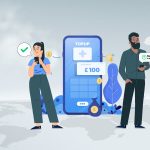Setting up a donation website is crucial for the success of a charity. The triumph of a charity fundraising website highly depends on how you’re engaging and communicating with the audience.
Creating a website for your nonprofit is a fantastic method to spread the word. It may allocate updates and information, make a persuasive argument, and entice people to participate. It will also cost considerably less than you might suppose if you take the appropriate strategy.
In this blog, you’ll find out 6 practical steps for how to build a nonprofit website.
Why do you need a website for your charity organization?
Building a nonprofit website for your charity organization helps stand out in the crowd. However, here are some specific reasons it’s important to create a website for a charity.
- You can represent your organization all over the world
- Add more value to your organization and fundraising cause
- Approach to the international fundraising market
- Get visible to donors on the go and convert more
6 steps on how to make a charity website
You probably don’t have much time or money to spare as a non-profit organization. Regardless, you want an attractive, functional, and simple website to navigate. An all-round charity payment solution can help reduce your stress in such circumstances.
The following 6 steps are the process of how to create a nonprofit organization website.
Step 1: Setting goals
Before designing and developing a donation website, you need to have a clear idea of what you want and how you plan to achieve it.
However here are some facts to check while setting up your charity fundraising website.
- Donation method
Determine the ways you want the funds to flow into your fundraising account. Such as online, offline, and hybrid donation methods. - Charity events
Think of what types of charity events can be organized? There should be an events page on your website that will let the audience know about all the past, current, and upcoming events. - Donation target
Think of what types of charity events can be organized? There should be an events page on your website that will let the audience know about all the past, current, and upcoming events. - Promotions
Set up promotional campaigns through the fundraising website. You should be able to run any campaign successfully like SMS campaign, virtual events creation, email campaign, and many more.
Bear in mind that your ultimate goal is to make it simple for people to donate money through the donation website.
Step 2: Donation funnel plan
A donation funnel is a process of targeting your potential donors, catching their attention, grooming, converting them to make a donation payment, and retaining them to become repeat donors.
So, you must create a donation funnel plan to convert website visitors into donors. The ideal funnel plan includes-
Attract donors
There are multiple ways to attract donors through online and offline channels. For offline you can go for postering, charity events, social activities, etc. For online you can go for Email Marketing, Social Media Marketing, Search Engine Advertising, etc.
Your website is the conversion point where potential donors will land in.
Grab attention
Once an audience visits the website, make sure it captures their attention. The constructive design, simple user experience, and powerful content will help you here.
Nurture
Once you grabbed the attention of the audience and generated leads, now it’s time to nurture their attention through email marketing, SMS marketing, and other marketing channels.
Convert
By implementing the right call to action (CTA) through the proper nurturing process, convert the audience to donate to your charity.
Repeat
After the first donation, it’s your responsibility to keep them engaged with your nonprofit website so they become repeat donors. Here you can offer them monthly donation subscription plans so that they are notified each month for donations.
Step 3: Tools & technology
Combine the best technology and tools after you’ve completed the previous steps before creating a website for a nonprofit organization.
You need to combine the best technology for specific usage for your donation website. Such as
- Funneling tools
- Email marketing tools
- Ticketing and donations tools
- Customized donation form development tools
- Payment method & gateway integration tools, etc.
Alternatively, you can concentrate on getting a white label charity fundraising solution that can be fully modified for every form of donation website. You will find all the scattered tools in one place and have a hassle-free fundraising experience.
Step 4: Content plan
- Testimonials to build the audience’s trust.
- Previous and current data on total funds raised.
- Optimized web content to know what your charity is about.
- Blogs to keep your audience engaged and educate them.

Step 5: Designs, development & integration
Design your website with a user-friendly experience so the audience can easily make a donation payment and navigate every information they’re looking for. Do not integrate with any unauthorized third-party tools that may cause a data leak.
Choose a color scheme that matches your charity’s logo and a simple, easy-to-navigate structure. Determine who will be visiting the website; for example, if your organization helps visually challenged individuals, choose a theme with large, clear, and easy-to-read fonts.
Whether you design the site yourself or hire someone else, make sure to include the following critical elements for design, development & integration.
- An about us page with your mission statement and a summary of your charity’s goals.
- A news page or blog with narratives about people and projects that your charity has supported and write-ups and images from events.
- An events page that lists future events and a message about what you’ve accomplished with the funds raised from donors.
- A visible contribute button should be displayed on every page if you accept donations via PayPal.
- A page on how to volunteer, with information on volunteer options and how people can participate.
- A contact us page for visitors who want to contact you.
Step 6: Tracking, optimization & promotion
When all the steps mentioned above are done, your website is ready to go live. Now it’s time for tracking the site visitors’ activities. You can use google analytics and third-party tracking tools.
Last but not least, think about how people will find your non-profit website online. This will happen through search engine organic searches. For this, you will need Search Engine Optimization (SEO) tools.
For marketing, the website needs to be available everywhere on the internet. Use the following platforms-
- Google AdWords
- YouTube
- Mailchimp
- Facebook & Twitter, etc.
Marketing a charity website is a vast issue that we’ll discuss in more detail in the following blog. So stay with us.
8 hacks to making your fundraising website successful
Now that you know all the steps of how to create a fundraising website. Here are some hacks that will help build a successful website for fundraising.
- Create a catchy fundraising title.
- Write a heartfelt fundraising story.
- Select the most appropriate photographs and videos for fundraising events.
- Choose the most appropriate fundraising goal.
- To maximize the volume of donations to your fundraiser website, share it on social media.
- Send greetings to all supporters and stay connected via monthly email.
- Provide updates that will help to achieve your goal.
- Create blog posts for maximum exposure on search engines
Final thought
As mentioned at the beginning of this blog, fundraising on the internet is elementary for any nonprofit organization. Always be cautious about it because the website is the face of your charity.
There are plenty of sites offering free websites developing for nonprofits. But free sites contain various risks, including data stealing. Also, you cannot have complete control over data which means someone else might have access to it. It is dangerous for both you and your donors. So when you see any offer that says free websites for nonprofit, always be very cautious. To avoid these issues build your own donation website or hire an expert team to do it for you.
We adore guiding charities in getting the most out of their websites by methodically preparing every element, particularly around the donation funnel and any conversion points. So do not hesitate to get in touch with us if you require additional assistance.
Ready to talk about your nonprofit website? Book a FREE consultation.
















